Abstract
Watanabe, Tsutomu (Keio University, Tokyo, Japan) and Keong W. Lyang. Episomemediated transfer of drug resistance in Enterobacteriaceae. V. Spontaneous segregation and recombination of resistance factors in Salmonella typhimurium. J. Bacteriol. 84:422–430. 1962.—It was found that spontaneous segregation of the transmissible multiple drug resistance [resistance to streptomycin (Sm), chloramphenicol (Cm), tetracycline (TC), and sulfonamide (Su)] takes place so frequently in Salmonella typhimurium strain LT-2 (Su, Sm, Cm, Tc) as to allow a clone analysis of the segregation of resistance factors with replica plating. Su-, Sm-, and Cm- resistance factors together were spotaneously lost most frequently, whereas the spontaneous loss of Tc-resistance factor alone was rather infrequent. The complete loss of the resistance factors was also noted with low frequencies. The mechanism of the spontaneous segregation of the resistance factors was assumed to be due to either genetic exchange between the resistance factors and host genome or incomplete replication of the transmissible resistance factors (composed of resistance factors and resistance-transfer factor). In relation to the mechanism of spontaneous segregation of the transmissible resistance factors, circular models of the transmissible resistance factors are presented. Four-drug-resistant strains were produced by transferring segregant types of transmissible resistance factors (Su, Sm, Cm) and (Tc) to the strains with (Tc) and (Su, Sm, Cm), respectively. In these four-drug-resistant strains, the two types of transmissible resistance factors were found to be in two different states; in one state the two types of transmissible resistance factors exist in the same cells independently of each other, and in the other state a transmissible resistance factor, which was produced as a result of recombination of the two types of transmissible resistance factors, is present. Two unusual strains of LT-2 with Su-, Sm-, and Cm-resistance factors and with four resistance factors were found. These strains could not transfer their resistance factors to Escherichia coli K-12 by conjugation. Their resistance factors were spontaneously segregated as frequently as those of LT-2 (Su, Sm, Cm) and LT-2 (Su, Sm, Cm, Tc), and the transfer of (Tc) to strain LT-2 with nontransmissible Su-, Sm-, and Cm-resistance factors gave rise to two types of clones; one could transfer the four resistance factors as a unit to K-12 by conjugation, and another could transfer only (Tc) and frequently segregated two types of clones; one had (Tc) and another had nontransmissible Su, Sm-, and Cm-resistance factors. From these findings, the unusual strains with nontransmissible resistance factors are assumed to have a “defective” resistance-transfer factor.
Full text
PDF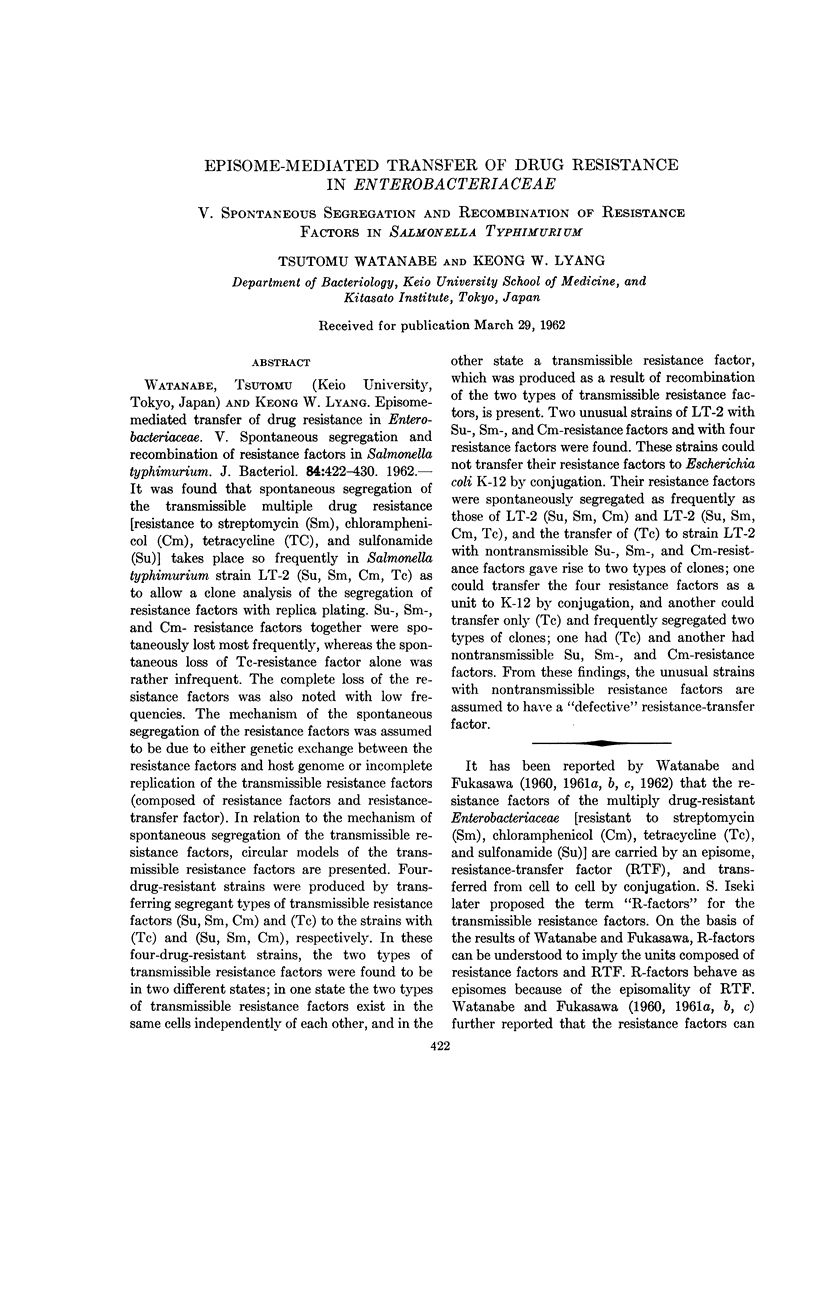
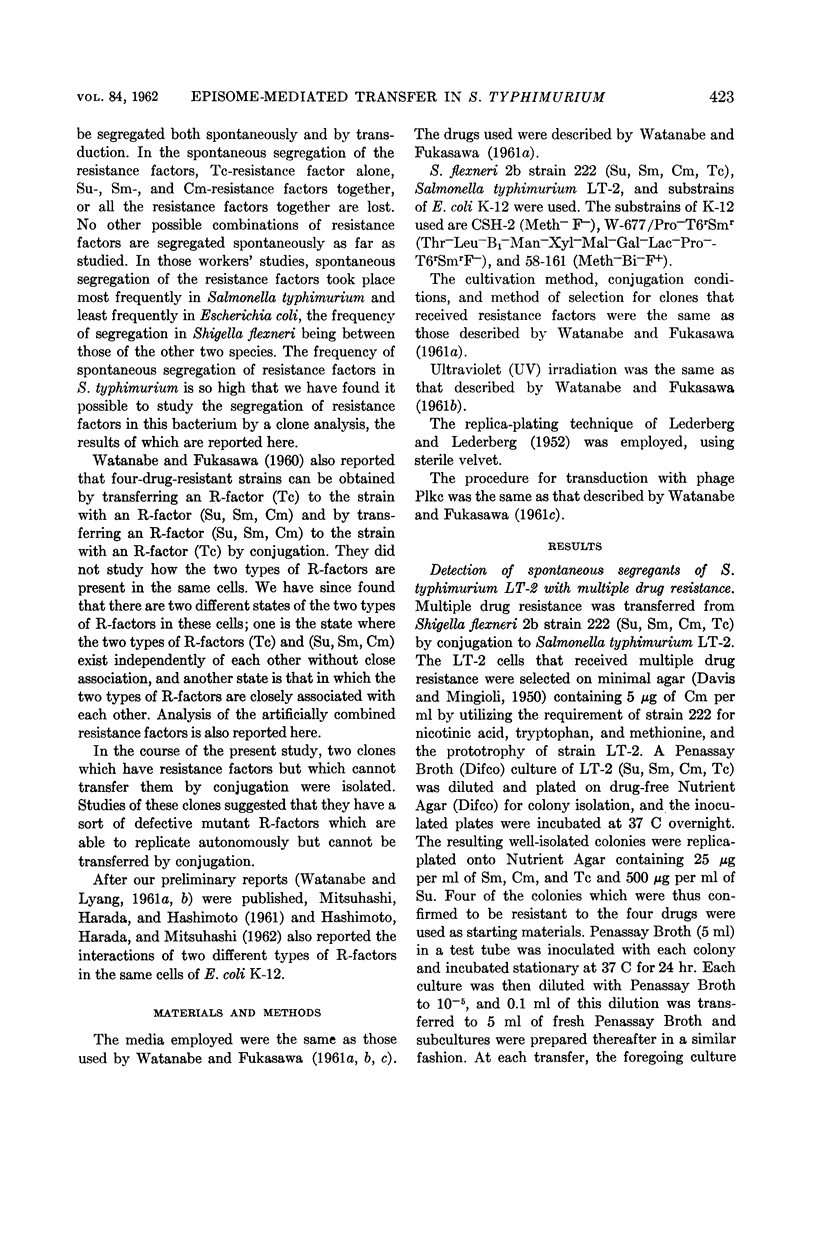
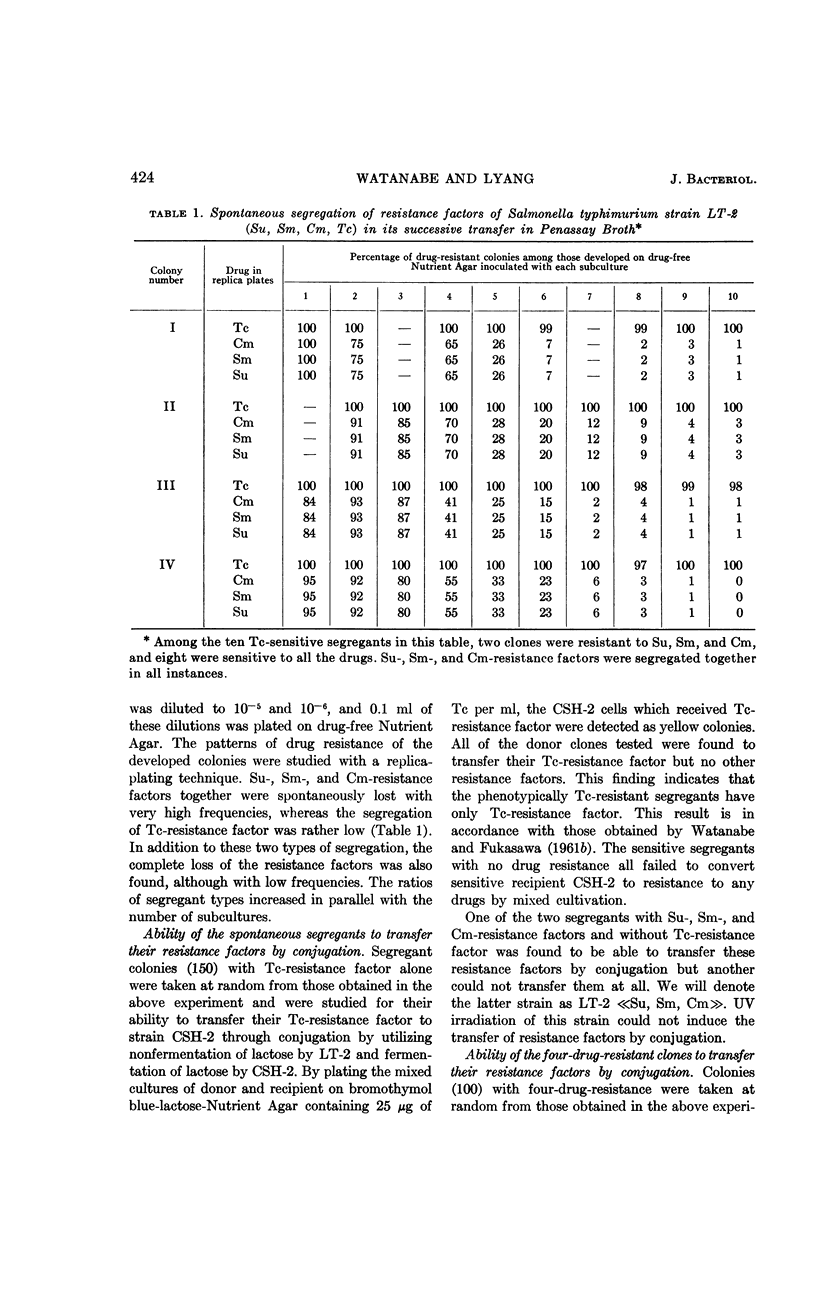
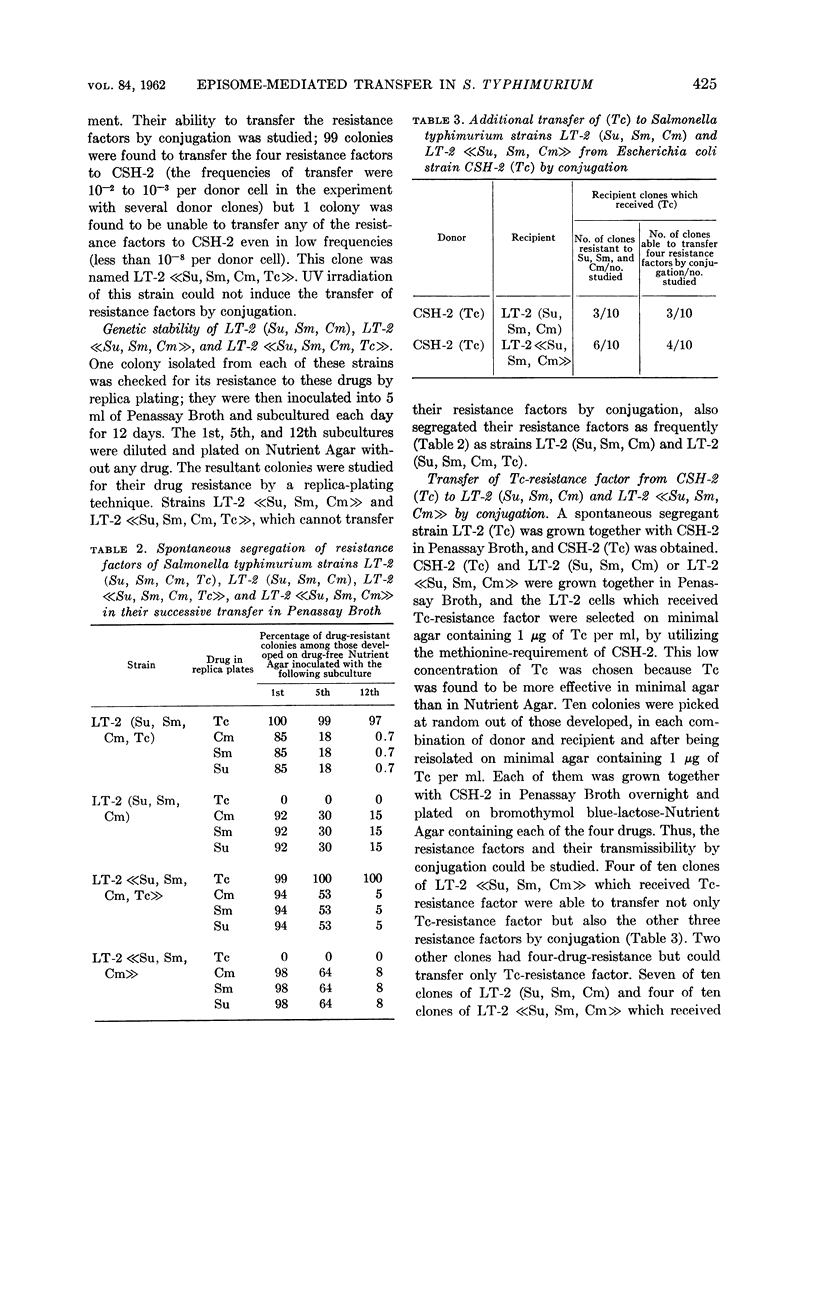
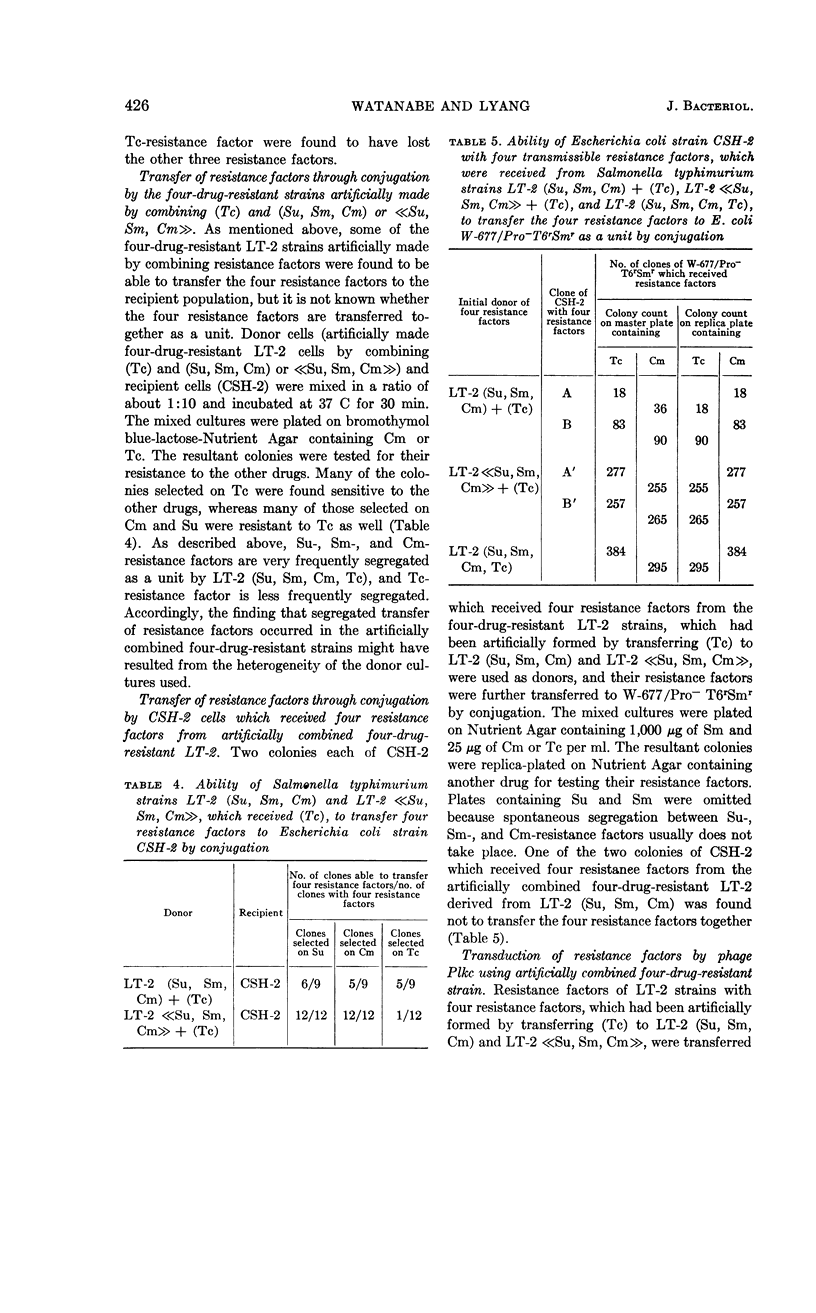
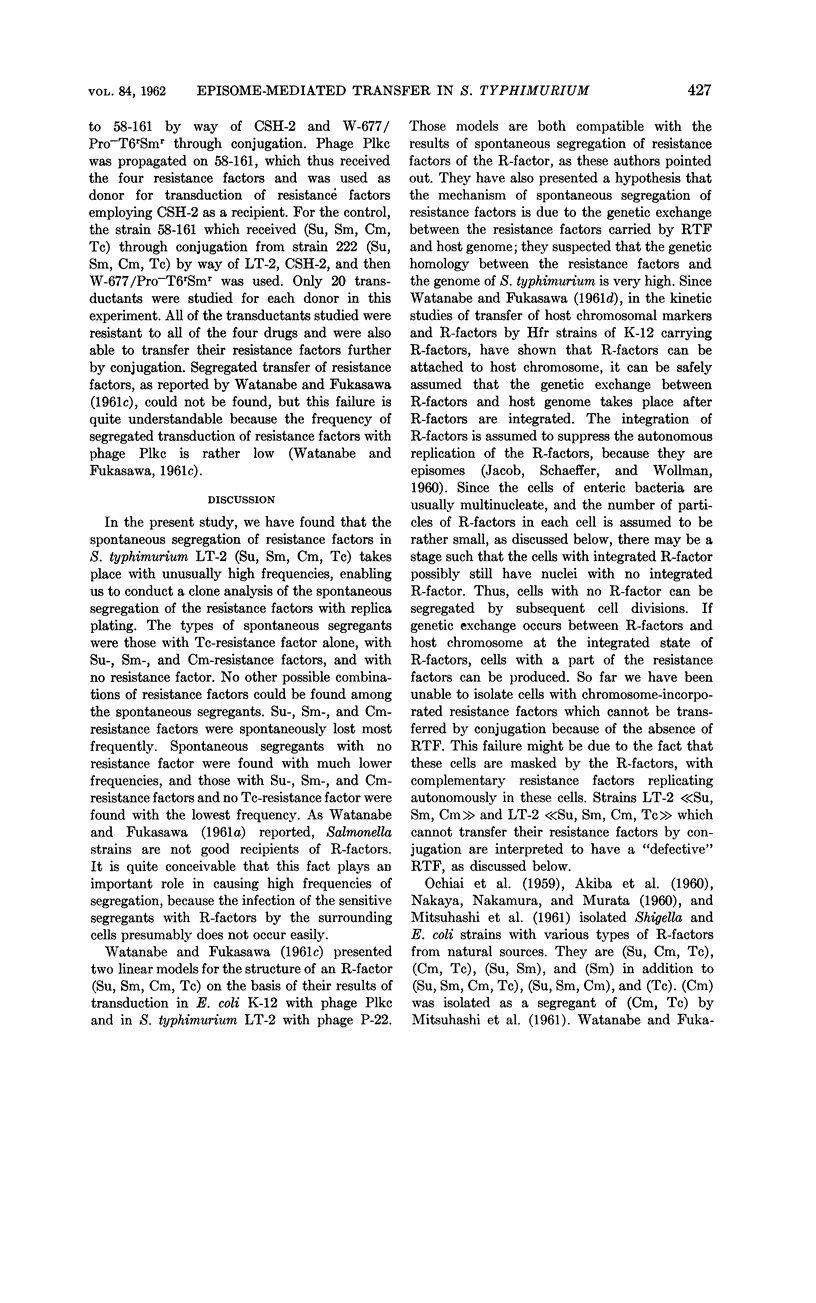
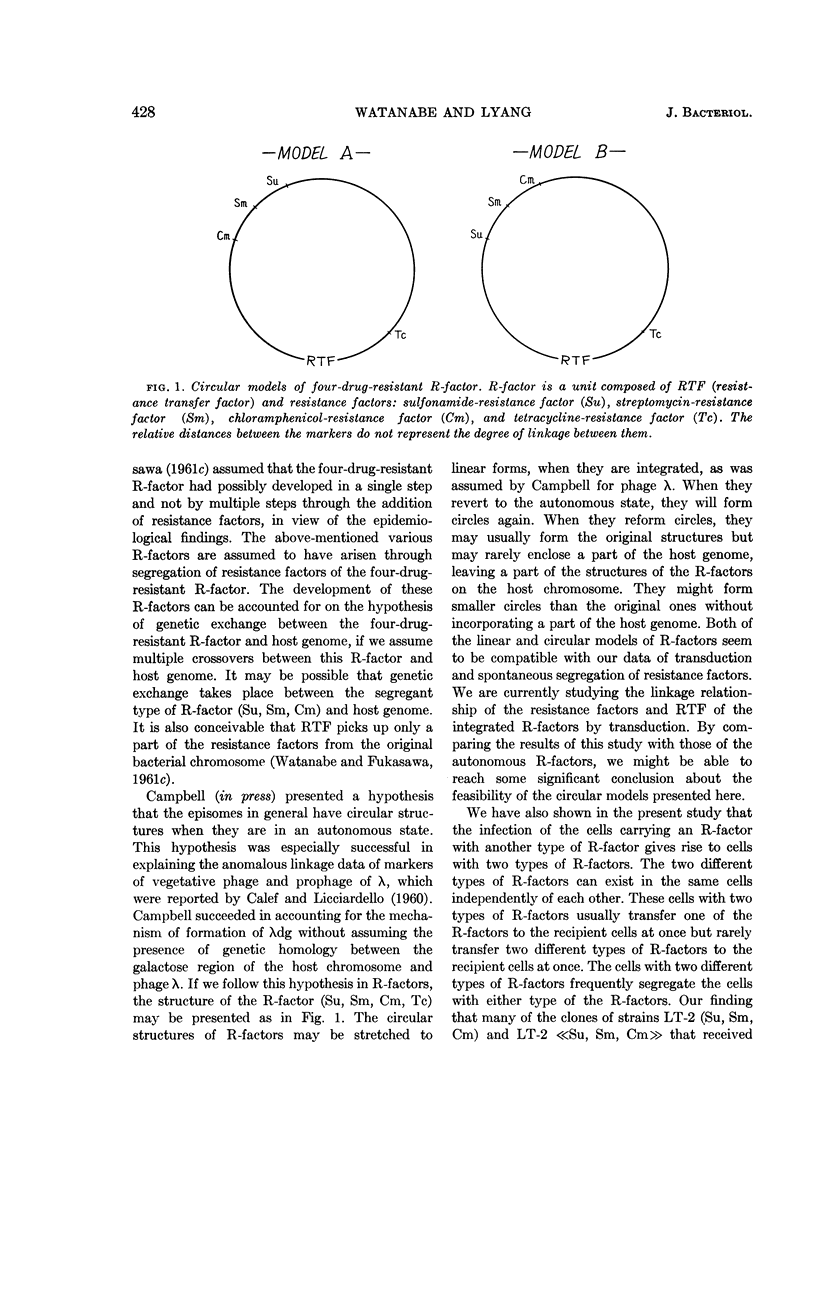
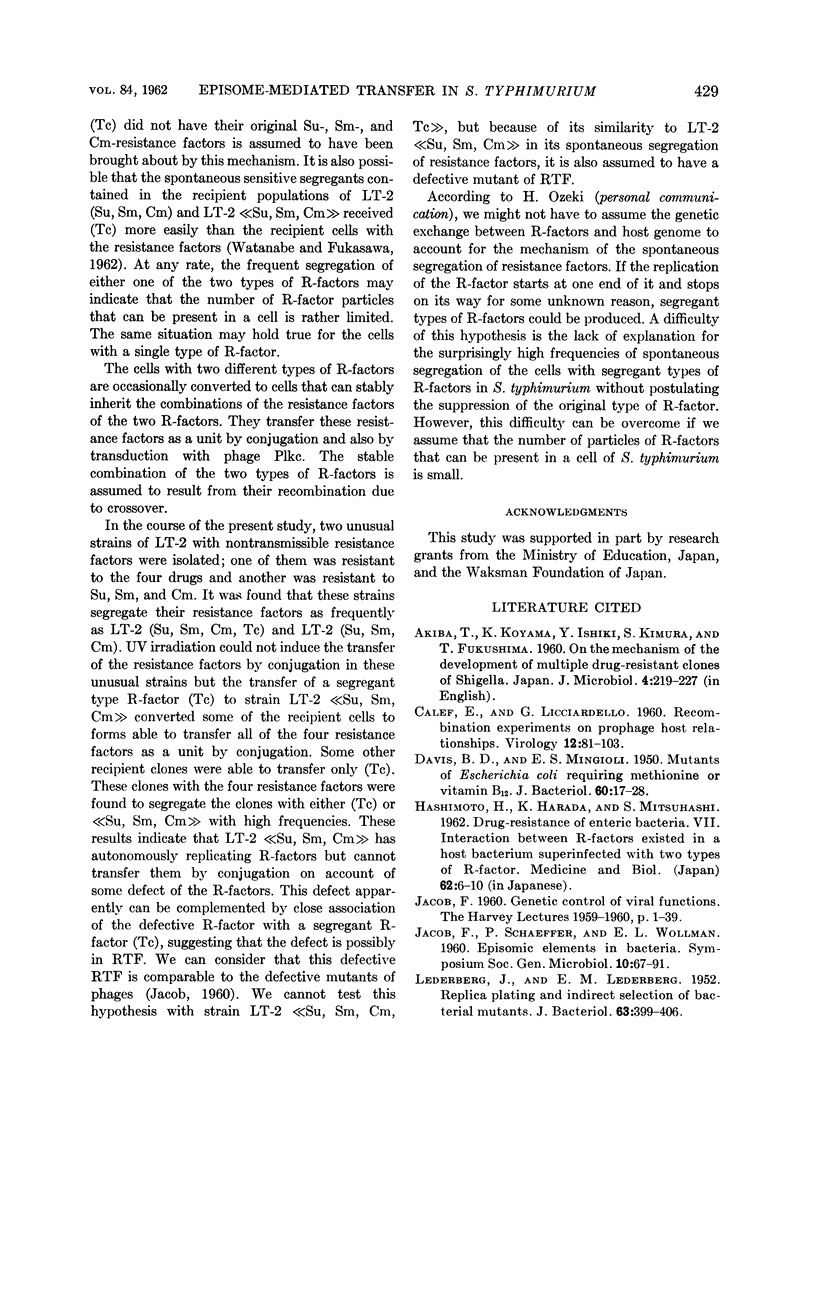
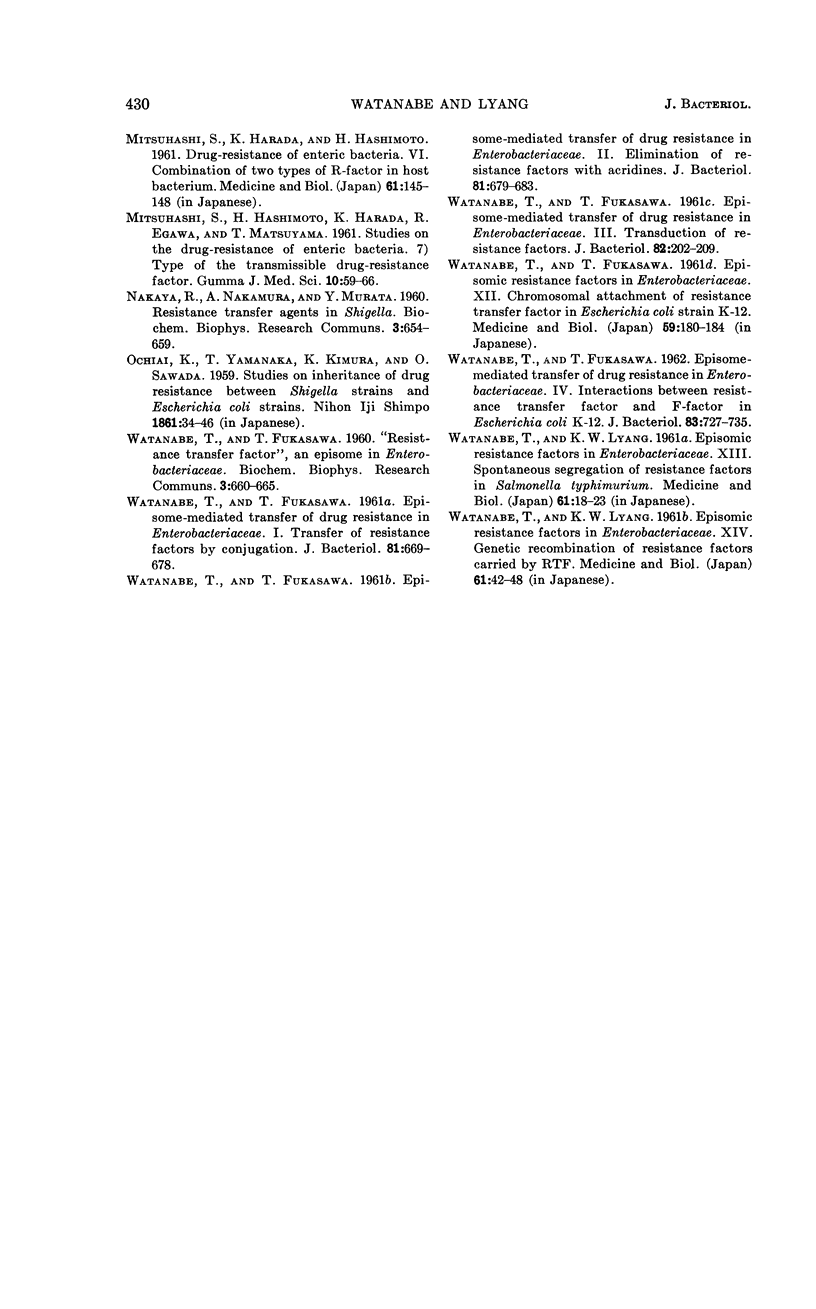
Selected References
These references are in PubMed. This may not be the complete list of references from this article.
- AKIBA T., KOYAMA K., ISHIKI Y., KIMURA S., FUKUSHIMA T. On the mechanism of the development of multiple-drug-resistant clones of Shigella. Jpn J Microbiol. 1960 Apr;4:219–227. doi: 10.1111/j.1348-0421.1960.tb00170.x. [DOI] [PubMed] [Google Scholar]
- DAVIS B. D., MINGIOLI E. S. Mutants of Escherichia coli requiring methionine or vitamin B12. J Bacteriol. 1950 Jul;60(1):17–28. doi: 10.1128/jb.60.1.17-28.1950. [DOI] [PMC free article] [PubMed] [Google Scholar]
- LEDERBERG J., LEDERBERG E. M. Replica plating and indirect selection of bacterial mutants. J Bacteriol. 1952 Mar;63(3):399–406. doi: 10.1128/jb.63.3.399-406.1952. [DOI] [PMC free article] [PubMed] [Google Scholar]
- NAKAYA R., NAKAMURA A., MURATA Y. Resistance transfer agents in Shigella. Biochem Biophys Res Commun. 1960 Dec;3:654–659. doi: 10.1016/0006-291x(60)90081-4. [DOI] [PubMed] [Google Scholar]
- WATANABE T., FUKASAWA T. Episome-mediated transfer of drug resistance in Enterobacteriaceae IV. Interactions between resistance transfer factor and F-factor in Escherichia coli K-12. J Bacteriol. 1962 Apr;83:727–735. doi: 10.1128/jb.83.4.727-735.1962. [DOI] [PMC free article] [PubMed] [Google Scholar]
- WATANABE T., FUKASAWA T. Episome-mediated transfer of drug resistance in Enterobacteriaceae. I. Transfer of resistance factors by conjugation. J Bacteriol. 1961 May;81:669–678. doi: 10.1128/jb.81.5.669-678.1961. [DOI] [PMC free article] [PubMed] [Google Scholar]
- WATANABE T., FUKASAWA T. Episome-mediated transfer of drug resistance in Enterobacteriaceae. II. Elimination of resistance factors with acridine dyes. J Bacteriol. 1961 May;81:679–683. doi: 10.1128/jb.81.5.679-683.1961. [DOI] [PMC free article] [PubMed] [Google Scholar]
- WATANABE T., FUKASAWA T. Episome-mediated transfer of drug resistance in Enterobacteriaceae. III. Transduotion of resistance factors. J Bacteriol. 1961 Aug;82:202–209. doi: 10.1128/jb.82.2.202-209.1961. [DOI] [PMC free article] [PubMed] [Google Scholar]


